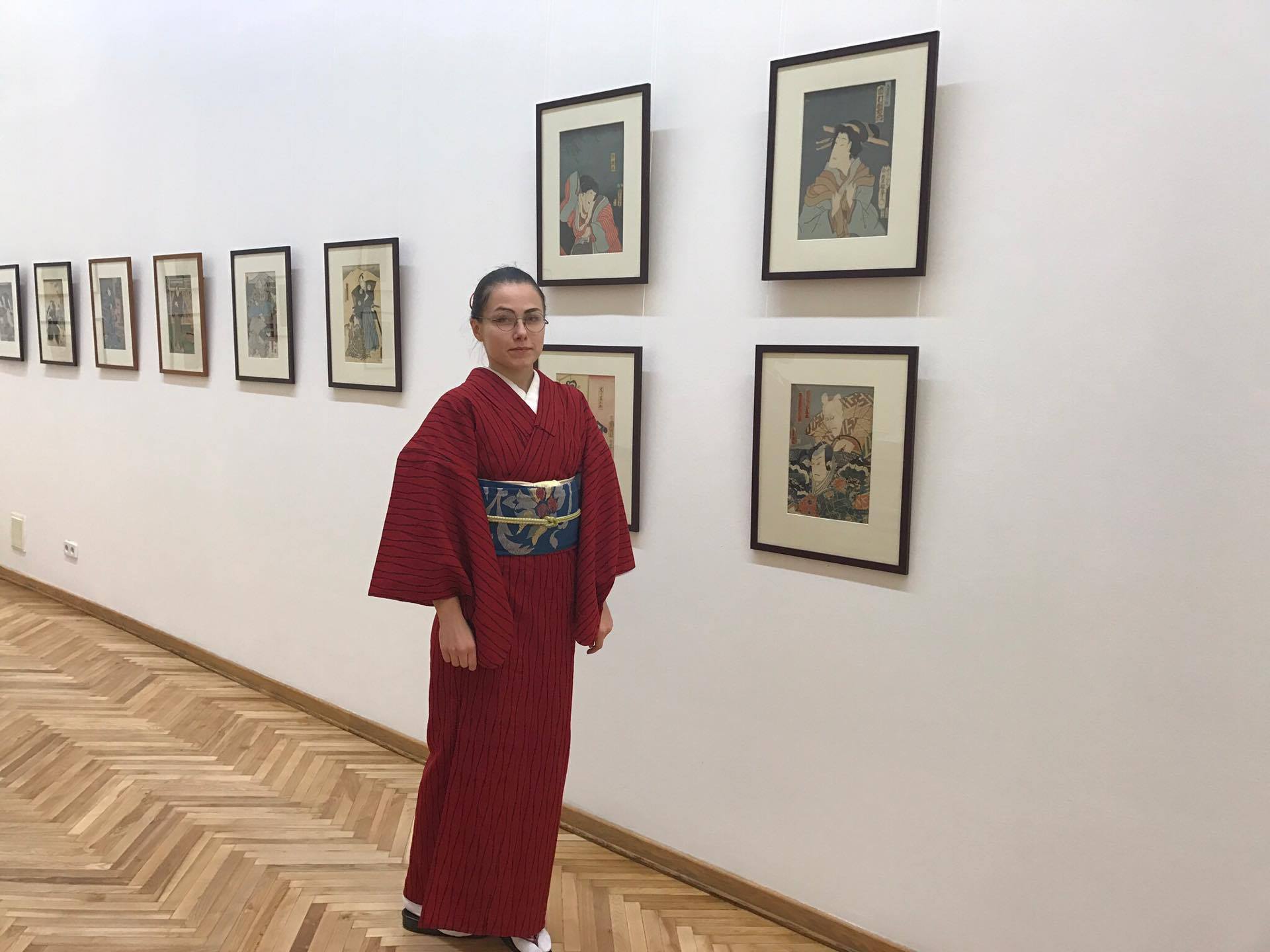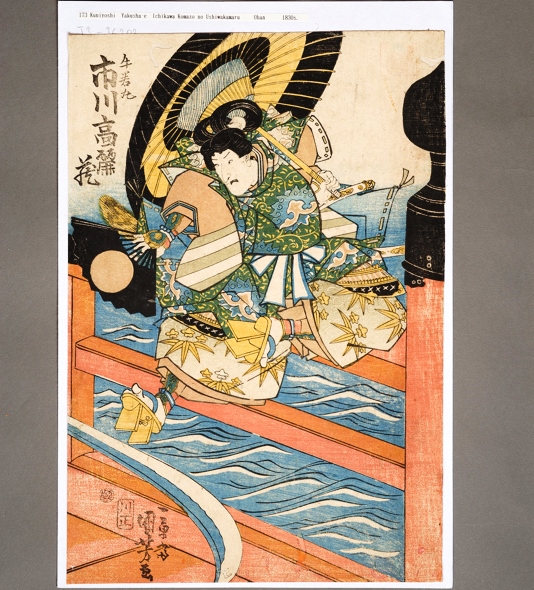Kabuki actors were superstars in eighteenth and nineteenth centuries in Japan. They were admired by passionate fans with an insatiable appetite for images of them, fed by a publishing industry that mass-produced colorful woodblock prints of actors on stage that could be cheaply purchased as souvenirs of or substitutes for a theater experience.

Read: Winter Art Exhibitions in Kyiv
The woodblock prints were a cheap and colorful medium of entertainment, much like magazines and posters today. Their visual style will be familiar to fans of Manga comics, Japanese cinema and even Quentin Tarantino’s Kill Bill films. Publishing houses commissioned designs from the very greatest artists of the era, but the prints were affordable to the average person on the street.
The World of Kabuki Art Exhibition presents a selection of these dramatic prints that connected fans to their idols, including off- or backstage portrayals that satisfied fans’ voyeuristic curiosity about their favorite actors’ lives, fantasy scenes of actors in unlikely groupings, and even death portraits of especially famous actors.

The collection of unique Japanese Prints of Kabuki Theater was presented to Ukrainian National Art Museum by the Embassy of Japan in Ukraine back in 1997. Part of the collection was later presented to other leading Ukrainian art museums such as Khanenko National Museum and Poltava Art Museum.
Ukrainian National Art Museum Japanese Prints of Kabuki Theater collection consists of 167 unique prints of Utagawa school. This exhibition showcases prints by major artists such as Utagawa Kuniyoshi (1797–1861) and his talented students Utagawa Kuniyasu (1794–1832), Utagawa Yosiyiku (1833–1904), Utagawa Kunisada (1786–1865).
Read: 360° View of the Performing Arts Worldwide with Google
Striking designs present vivid depictions of Kabuki, the popular form of traditional, all-male, Japanese theatre which combines drama, music, dance and acrobatics in convoluted plots concerning dramatic, emotional conflicts and feats of derring-do. The exhibition can be viewed at Ukrainian National Art Museum (6, Hrushevsky street, Kyiv) from January 20th, 2017 till February 19th, 2017.
Photo source: Ukrainian National Art Museum PR department







